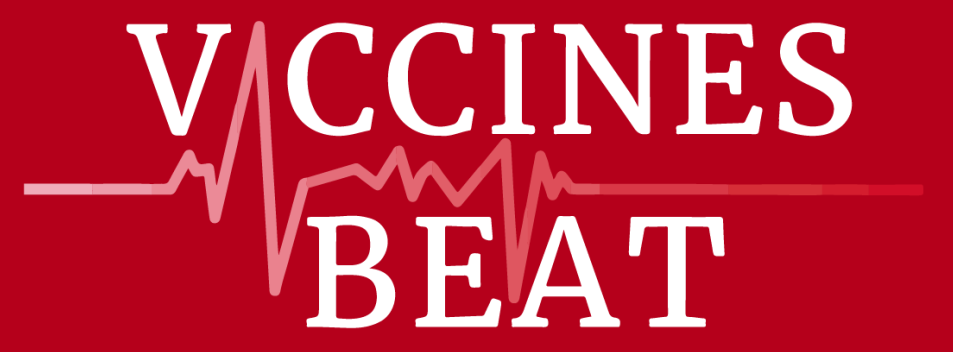Bowen DH, Casciola L, Aimade W, Lindeburg E, Muhula SO, Osur J, Rakhshani NS, Fayomi SA, Johnson T, Holme M, Vangsgaard C; ReD Trust Group. The Vaccine Trust Framework: mixed-method development of a to ol for understanding and quantifying trust in health systems and vaccines. Lancet Glob Health. 2025 Sep;13(9):e1553-e1563.
doi: https://doi.org/10.1016/S2214-109X(25)00245-1 PMID:40845881.
Editorial comment: The Vaccine Trust Framework, developed through the synthesis of ethnographic research, encompasses four interconnected domains—health system promises, health system delivery, vaccine promise, and vaccine delivery—across 15 measurable dimensions. Survey data were obtained from 3,670 participants in Kenya and 3,734 in Pakistan. Findings showed that trust significantly influenced vaccine-related behaviors and intentions, with quantitative trust scores strongly associated with vaccination status across the studied vaccines. Regional variations in trust were evident within both Kenya and Pakistan, aligning closely with qualitative insights into local perceptions of vaccines and health systems. The Vaccine Trust Framework represents a validated and contextually grounded tool for measuring trust in vaccines and health systems in low-income and middle-income countries, with potential to guide targeted interventions and policy.
Quandelacy TM, Vincente-González MF, Grillet ME, Colomé-Hidalgo M, Herrera D, Torres Aponte JM, Marzán Rodríguez M, Adams LE, Paz-Bailey G, Rodriguez DM, Munayco C, Figueroa L, Masis R, Borbor-Cordova M, Ortiz-Prado E, Piaggio M, Rollock L, Barrenechea G, Carbajo A, Estallo EL, Dos Santos T, Robert MA, Rodriguez-Barraquer I, Lowe R, Stewart-Ibarra AM, Garcia-Carreras B, Cummings D, Johansson MA. Synchronized dynamics of dengue across the Americas. Sci Transl Med. 2025 Aug 20;17(812):eadq4326.
doi: https://doi.org/10.1126/scitranslmed.adq4326
Editorial comment: Dengue is a serious health concern in Latin America, which has experienced a surge in recent outbreaks. Quandelacy et al. used historical surveillance data going back decades to analyze seasonal and multiannual patterns of dengue incidence at a regional scale across a swathe of Latin America. The authors report that more than half of all provinces or islands studied had dengue outbreaks about every 12 months, with strong synchrony observed. In addition, increased dengue incidence was associated with strong seasonality of occurrence, and changes in temperature and precipitation (including El Niño weather patterns) often occurred months before changes in case incidence. This study provides a comprehensive view of regional dengue incidence across Latin America and could potentially aid forecasting or intervention efforts.
Kelvin AA, Baker PH, Ghosh S, Schultz-Cherry S, Langel SN. Influenza infection of the mammary gland. J Virol. 2025 Aug 12:e0194024.
doi: https://doi.org/10.1128/jvi.01940-24
Editorial comment: In this mini-review, the authors highlight pivotal studies demonstrating the replication of influenza and other viruses in the mammary gland, summarize recent findings from experimental and natural H5N1 clade 2.3.4.4b infections in dairy cattle and small animal models, and examine the broader One Health implications of the ongoing H5N1 outbreak. They also underscore the urgent need for interdisciplinary collaboration across human, animal, and environmental health sectors to mitigate the risks posed by influenza viruses with pandemic potential.
Talha B. Chikungunya’s global resurgence. Lancet 2025; 406: 900 – 901.
doi: https://doi.org/10.1016/S0140-6736(25)01745-3
Editorial comment: Chikungunya is re-emerging worldwide, carrying an enormous potential to cause long-term disability through chronic arthritis and persistent joint pain. With the FDA’s suspension of IXCHIQ—the live-attenuated chikungunya vaccine—many American travelers may now face heightened susceptibility to this rapidly spreading mosquito-borne disease. Without preventive vaccination, the risk of prolonged disability among exposed individuals becomes an urgent global and public health concern.
Surie D, Self WH, Yuengling KA, Lauring AS, Zhu Y, Safdar B, Ginde AA, Simon SJ, Peltan ID, Brown SM, Gaglani M, Ghamande S, Columbus C, Mohr NM, Gibbs KW, Hager DN, Prekker M, Gong MN, Mohamed A, Johnson NJ, Steingrub JS, Khan A, Duggal A, Gordon AJ, Qadir N, Chang SY, Mallow C, Felzer JR, Kwon JH, Exline MC, Vaughn IA, Ramesh M, Papalambros L, Mosier JM, Harris ES, Baughman A, Cornelison SA, Blair PW, Johnson CA, Lewis NM, Ellington S, Grijalva CG, Talbot HK, Casey JD, Halasa N, Chappell JD, Rutkowski RE, Ma KC, Dawood FS; Investigating Respiratory Viruses in the Acutely Ill (IVY) Network. RSV Vaccine Effectiveness Against Hospitalization Among US Adults Aged 60 Years or Older During 2 Seasons. JAMA. 2025 Aug 30:e2515896.
doi: https://doi.org/10.1001/jama.2025.15896
Editorial comment: In this US-CDC performed study, of 6958 adults aged 60 years or older, 821 (11.8%) were RSV cases and 6137 (88.2%) were controls. A total of 63 cases (7.7%) and 966 controls (15.7%) were vaccinated. Estimated vaccine effectiveness against RSV-associated hospitalization was 58% (95% CI, 45%-68%) during 2 seasons and 69% (95% CI, 52%-81%) for same-season vaccination. Respiratory syncytial virus vaccines prevented RSV-associated hospitalization during 2 seasons, although effectiveness was lower in patients with immunocompromise and cardiovascular disease.
Anderson CS, Hua C, Wang Z, Wang C, Jiang C, Liu R, Han R, Li Q, Shan S, Billot L, Macintyre CR, Patel A, Zhang H, Ma C, Dong J, Du X. Influenza vaccination to improve outcomes for patients with acute heart failure (PANDA II): a multiregional, seasonal, hospital-based, cluster-randomised, controlled trial in China. Lancet. 2025 Sep 6;406(10507):1020-1031.
doi: https://doi.org/10.1016/S0140-6736(25)01485-0
Editorial comment: In this Chinese study, 7,771 participants were enrolled across 164 hospitals during each winter season between Dec 3, 2021, and Feb 14, 2024. A total of 3,570 patients were assigned to the influenza vaccination group and 4,201 to the usual care (control) group. The primary outcome occurred in 1,378 (41.2%) of 3,342 patients in the vaccination group versus 1,843 (47.0%) of 3,919 patients in the control group (odds ratio [OR] 0.83, 95% CI 0.72–0.97; p=0.019), with consistent results in the sensitivity analysis. Serious adverse events were also significantly less frequent in the vaccination group (1,809 [52.5%] of 3,444) compared with the control group (2,426 [59.0%] of 4,110; OR 0.82, 95% CI 0.70–0.96; p=0.013). Interpretation: Influenza vaccination during hospital admission for acute heart failure significantly improves survival and reduces the risk of rehospitalization over the following 12 months.
Pancelli V, Clemens R, Bica MA, Costa Clemens SA. Pandemic preparedness and response: a survey among experts from high- and low-middle-income countries about the 100 Days Mission. Front. Public Health. 2025 Sep 4; 13.
doi: https://doi.org/10.3389/fpubh.2025.1617066
Editorial comment: This excellent publication reports on a descriptive cross-sectional study conducted through a semi-structured online survey distributed to 116 experts from both low- and middle-income countries (LMICs) and high-income countries (HICs). The overall response rate was 73.2% (85/116), including 74% (57/77) from HICs and 69.2% (27/39) from LMICs. Notably, experts from LMICs expressed greater confidence in the success of the 100 Days Mission (100DM) (51.9% [14/27]) compared with their HIC counterparts (26.3% [15/57]). Similarly, LMIC respondents were more likely to believe in the 100DM’s potential to reduce inequalities (55.6% [15/27] vs. 33.3% [19/57]). Across both groups, nearly all respondents emphasized that political will and governance, along with sufficient and sustainable funding, are the most critical prerequisites for the success of the 100DM. This represents the first prospective survey assessing the feasibility of the 100DM with input from external stakeholders in both HICs and LMICs. Importantly, experts from LMICs were more optimistic about the 100DM’s success compared with those from HICs.
Mues KE, Zhou CK, Gerber JE, van Hunsel F, Klein NP, Izurieta HS, Chen RT. A review of methodologic & data considerations for vaccine safety surveillance in the wake of the COVID-19 pandemic. Vaccine. 2025 Sep 5;64:127691.
doi: https://doi.org/10.1016/j.vaccine.2025.127691
Editorial comment: This review examines key lessons and mitigation strategies for COVID-19 vaccine safety surveillance, particularly in the context of a global pandemic marked by the rapid rollout of novel vaccines to large populations. It also addresses critical methodological considerations, including case definitions, risk window misclassification, time to signal detection, sample size requirements, establishing appropriate counterfactuals, and controlling for confounding.
Irving SA, Groom HC, Belongia EA, Crane B, Daley MF, Jackson LA, Kenigsberg TA, Kuckler L, Tseng HF, Williams JTB, Zerbo O, Naleway AL. Differences in influenza vaccination coverage by race and ethnicity across age groups in the Vaccine Safety Datalink, 2017-18 through 2022-23 influenza seasons. Vaccine. 2025 Sep 4;64:127667.
doi: https://doi.org/10.1016/j.vaccine.2025.127667
Editorial comment: In this study across eight Vaccine Safety Datalink health systems, the authors identified influenza vaccinations administered between August 1 and March 31 of each season from 2017–18 through 2022–23 using electronic health records linked to immunization registries. Crude vaccination coverage was calculated for five age groups (6 months–8 years, 9–17, 18–49, 50–64, and ≥65 years) by self-reported race and ethnicity. Across all seasons and age groups, coverage was consistently highest among non-Hispanic (NH) Asian individuals and lowest among NH Black individuals. In the 2022–23 season, the gap in coverage between NH Asian and NH Black individuals ranged from 15.1 percentage points (≥65 years) to 32.7 percentage points (6 months–8 years). These persistent disparities across age groups underscore the need for a deeper understanding of barriers to influenza vaccination.
Toniolo A, Chumakov K, Federico G, Maccari G, Genoni A, Saba A, Nauti A, Bono G, Molteni F, Monaco S. Post-Polio Syndrome: Impact of Humoral Immune Deficiencies, Poliovirus Neutralizing Antibodies, Vitamin D Deficiency. Vaccines. 2025; 13(9):939.
doi: https://doi.org/10.3390/vaccines13090939
Editorial comment: This study—limited to serum antibodies—highlights the complex relationship between immune status and long-term health in aging polio survivors. The results emphasize the need for potent poliovirus drugs and vaccines to help contain possible outbreaks but also—for poliomyelitis survivors—to avoid or mitigate the progression to PPS, the latest phase of this devastating disease.
Sokolovska L, Jansons J, Buonaguro FM, Isaguliants M. Online Conference “Chronic Viral Infections and Cancer, Openings for Vaccines and Cure” VIRCAN2024, Monitoring the Progress. Vaccines. 2025; 13(9):940.
doi: https://doi.org/10.3390/vaccines13090940
Editorial comment: The international online conference “VIRCAN2024: Chronic viral infections and cancer, openings for Vaccines and Cure” aimed to address the remaining issues, present the research carried out in this broad field, and prognose directions for its development. The conference covered oncogenicity mechanisms and new approaches in the development of treatments and vaccines. VIRCAN2024 was held on the platform of Riga Stradins University, Riga, Latvia. The conference was supported by the Latvian Science Council grant “Human papillomavirus genome associated correlates of disease progression and treatment response for cervical neoplasms and cancer”, and the scientific journal Vaccines (MDPI). This report summarizes the lectures and presentations given at the conference.
Bhaliya K, Anwer M, Wei MQ. Emerging Therapeutic Strategies for Lung Cancer: The Role of Immunotherapy and HPV-Targeted Cancer Vaccines. Vaccines. 2025; 13(9):957.
doi: https://doi.org/10.3390/vaccines13090957
Editorial comment: Lung cancer remains the leading cause of cancer-related mortality worldwide, with non-small-cell lung cancer (NSCLC) accounting for the majority of cases. Despite advances in targeted therapies and immunotherapy, long-term survival outcomes remain suboptimal. This review examines current immunotherapeutic approaches, the evolving role of therapeutic cancer vaccines, and the emerging potential of human papillomavirus (HPV)-targeted interventions in lung cancer, particularly among non-smokers. Novel cancer vaccine platforms—including peptide-based, mRNA, DNA, dendritic cell, and bacterial ghost technologies—are being investigated as complementary strategies to boost antitumor immunity. In addition, growing evidence links high-risk HPV infection to lung cancer development, reinforcing the rationale for HPV-targeted vaccine strategies in this context.
Ong EZ, Yee JX, Koh CW, Ooi JS, Tham CYL, Chan KR, Kareko BW, Lyski ZL, Tricou V, Dean H, Braun R, Kalimuddin S, Low JG, Messer WB, Sharma M, Ooi EE. Dengue virus infection reprograms baseline innate immune gene expression. Med. 2025 Sep 1:100841.
doi: https://doi.org/10.1016/j.medj.2025.100841
Editorial comment: In this study, a whole-genome microarray was used to assess the host response to TAK-003, with bulk whole-blood RNA sequencing confirming baseline gene expression differences between seronegative and seropositive individuals. Interestingly, whereas a single DENV infection reprogrammed the expression of innate immune markers—including those linked to dengue pathogenesis and disease severity—vaccination did not induce similar innate immune reprogramming. These findings suggest that natural DENV infection leaves a lasting imprint on the innate immune system, which may influence both vaccine responsiveness and the risk of secondary dengue pathogenesis.
Silva Dirzo M, Castillo Bejarano JI, Casillas Casillas MC, Guadarrama Rivera L, Domínguez Barrera C, Sánchez Carrillo YH, Aragón Nogales R, Martínez Bustamante ME, Carmona Vargas AJ, Cisneros Saldaña D, Galán García E, Castro Perez A, Arias de la Garza E, Barrientos Martínez VA. Unraveling the pertussis outbreak in Mexico: insights from a multicenter 2024-2025 STUDY. Pediatr Infect Dis J. 2025 Sep 10.
doi: https://doi.org/10.1097/INF.0000000000004986
Editorial comment: In this study, authors analyzed 59 pediatric pertussis cases during Mexico’s 2024-2025 outbreak. Mortality was 13.6%, with low maternal Tdap coverage (27.1%) and incomplete infant vaccination (16.9%). Mortality correlated with intensive care unit admission, intubation, leukocytosis and coronavirus codetection. Peak leukocyte count predicted mortality (P = 0.027; area under the curve = 0.79). Findings underscore the need for maternal immunization and early detection.
Cerqueira-Silva T, Cardim LL, Paixão E, Rossi M, Santos AC, Portela F de Souza A, Santos G, Barreto ML, Brickley EB, Pescarini JM. Hospitalisation, mortality and years of life lost among chikungunya and dengue cases in Brazil: a nationwide cohort study, 2015-2024. Lancet Reg Health Am. 2025 Jul 7;49:101177.
doi: https://doi.org/10.1016/j.lana.2025.101177
Editorial comment: In this Brazilian study, the authors analyzed nationwide de-identified records of chikungunya and dengue cases registered between January 1, 2015, and December 31, 2024. They estimated risk factors for hospitalization and in-hospital mortality using logistic regression and the Fine and Gray model, respectively. Years of life lost (YLL) and average YLL (aYLL) were also calculated, stratified by geographic region, sex, and race/ethnicity. Infants, older adults (≥70 years), males, and individuals with comorbidities were found to have an increased risk of severe disease. Importantly, historically marginalized populations—particularly those self-identifying as Black or Indigenous—experienced significantly greater YLL compared with the white population. These findings underscore that mitigating the impact of chikungunya and dengue requires addressing underlying health and social inequities.
Schönfeld V, Rau C, Cai W, Wichmann O, Harder T. The Incidence of RSV Infection Since the Introduction of Monoclonal Antibody Prophylaxis. An analysis of reported case data across Germany for the seasons 2023/24 and 2024/25. Dtsch Arztebl Int 2025; 122: 472-3.
doi: https://doi.org/10.3238/arztebl.m2025.0111
Editorial comment: In this German study, the authors analyzed nationwide RSV notification data collected by the Robert Koch Institute for the 2023/24–2024/25 seasons, along with data from Saxony available since the 2015/16 season, stratified by age group and hospitalization status. Among infants (<1 year), RSV incidence decreased by 54%, from 2,291 cases per 100,000 infants (95% CI: 2,255–2,326) in 2023/24 to 1,045 per 100,000 (95% CI: 1,021–1,069) in 2024/25. In 1-year-olds, incidence declined from 1,146 per 100,000 (95% CI: 1,121–1,170) to 1,052 per 100,000 (95% CI: 1,029–1,075). These findings suggest that the introduction of RSV-monoclonal antibodies in Germany has been significantly associated with reduced RSV-related hospitalizations.







